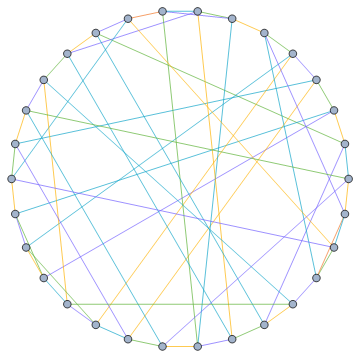I have a partial answer and I am exploring the problem with a computer now. In the positive direction, Fournier’s theorem provides a partial answer.
Fournier’s theorem is a strengthening of Vizing’s theorem and it goes as follows: Let $D$ be the max degree of your graph $G$. If the vertices of $G$ that have degree $D$ are independent, then $G$ is class 1. Let us say that a graph which satisfies this condition is a Fournier graph.
So consider a cycle plus triangles graph $G$ and vertex-3-color $G$ with colors $r, g, b$. Delete the triangle edges between vertices colored $r, b$. Then, the resulting graph is Fournier with max degree 4, so it can be edge-4-colored. So the question remains whether it is possible to reinsert the deleted edges so that $G$ remains class 1. It turns out, not always, here is the updated answer:
UPDATED ANSWER: All examples with even number of triangles that I have tried are class 1. I didn’t realize before that all the examples I had tried had an even number of triangles. HOWEVER, examples with an ODD number of triangles are class 2. So we can CONFIRM that the the conjecture as I stated it originally (I asked if all such graphs were class 1) does not stand. So it is pertinent to modify the question: are all C + T graphs with an even number of triangles class 1? And are all the ones that have an odd number of triangles class 2? Already graphs with only 3 triangles are class 2. Recall that graphs have to be simple.
Here is a pretty picture of a C + T graph with 10 triangles

